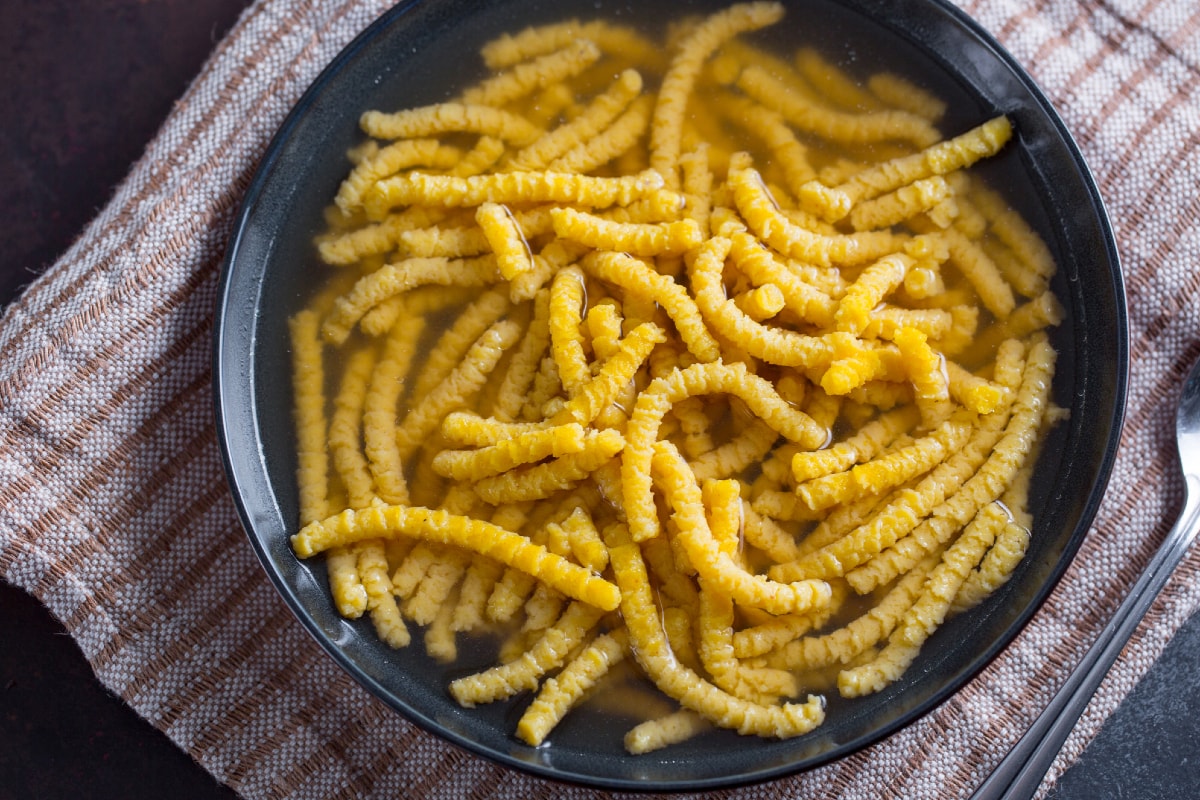Tortellini
- Average
- 1 h 50 min


The origins of passatelli in broth lie in Emilia Romagna, a region where you can really eat well and that’s the birthplace of many recipes prepared by hand, such as fresh egg pasta. This is a first course dish that goes back to medieval times, as mentioned in the information held by the Accademia Italiana di Cucina (Italian Culinary Academy), with which the recipe is registered. Although the proportions of the main ingredients used in this recipe (egg, parmesan cheese, and breadcrumbs) stay more or less the same among the different areas of Emilia, Romagna, and Marche, there are some nuances: Some people use a pinch of flour to adjust the dough, like we’ve done; some add flavor only using lemon zest, while others only use a sprinkling of nutmeg, or both lemon and nutmeg. Maybe you even have your own traditional and family recipes for passatelli in broth, made using the special tool that generations have used to pass on the technique for mashing and dragging the dough, with a good rhythm and lots of patience! We’re going to show you how to do it with a potato ricer (fitted with the coarse disc), a really easy method that anyone can do and that will give you handmade passatelli to serve in a tasty meat broth as a perfect addition to your menu on Christmas Day, December 26th (when a dish in broth is traditionally eaten), or New Year’s Eve!

To make the passatelli in broth, start by making a good meat broth. While it’s cooking, turn to the dough for the passatelli: Zest one lemon, being careful not to remove the more bitter white part 1 as well. Beat the eggs in a bowl for a few moments together with a pinch of salt 2. In a larger bowl, combine the breadcrumbs (better if they’re grated from dry bread) and grated Parmigiano Reggiano DOP cheese 3.

Versate anche la farina, aromatizzate con la scorza di limone 4 e la noce moscata grattugiata 5. Unite le uova 6.

Mix the ingredients, using a spatula at first 7, then by hand. You’ll have to work the mixture for a while to get a compact and elastic little mound of dough 8. You can use it immediately or let it rest for 10-15 minutes wrapped in plastic wrap 9.

Take one piece of the dough at a time and place it in a potato ricer fitted with the coarse disc (holes at least 1/4” (5 mm) in diameter) 10, pressing the dough out directly into the broth, which should be boiling gently (not rapidly) 11. Use a knife to cut the passatelli as they come out through the potato ricer, to a length of around 2-2? inches (5-6 cm) 12.

Cook the passatelli very briefly 13, only until they rise to the surface, and then place them directly in individual dishes or a soup tureen 14. Serve the passatelli piping hot 15, with a little more grated Parmigiano Reggiano and some freshly ground black pepper on top if you’d like!